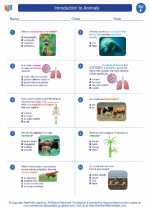Ovaries
The ovaries are reproductive glands in females located in the pelvis. They are part of the female reproductive system and have two main functions: the production of female sex hormones, such as estrogen and progesterone, and the release of eggs during the menstrual cycle for potential fertilization.
Anatomy of the Ovaries
The ovaries are small, oval-shaped organs located on either side of the uterus. They are connected to the uterus by the fallopian tubes. Each ovary is about the size and shape of an almond and contains thousands of follicles, which are tiny sacs that hold immature eggs.
Functions of the Ovaries
The ovaries have two main functions:
- Production of Female Sex Hormones: The ovaries produce estrogen and progesterone, which are responsible for the development of female secondary sexual characteristics, regulation of the menstrual cycle, and maintenance of pregnancy.
- Release of Eggs: During the menstrual cycle, the ovaries release a mature egg in a process called ovulation. The egg is released into the fallopian tube, where it may be fertilized by sperm.
Common Disorders of the Ovaries
Some common disorders that can affect the ovaries include:
- Polycystic Ovary Syndrome (PCOS): A hormonal disorder causing enlarged ovaries with small cysts on the outer edges.
- Ovarian Cysts: Fluid-filled sacs that develop within the ovary.
- Ovarian Cancer: The growth of abnormal cells in the ovaries, often detected at an advanced stage.
Study Guide
Here are some key points to remember about the ovaries:
- The ovaries are reproductive glands in females responsible for hormone production and egg release.
- They are located in the pelvis and connected to the uterus by the fallopian tubes.
- The ovaries produce estrogen and progesterone, which regulate the menstrual cycle and support pregnancy.
- Ovulation is the process of releasing a mature egg from the ovaries into the fallopian tube.
- Common disorders of the ovaries include PCOS, ovarian cysts, and ovarian cancer.
◂Science Worksheets and Study Guides Sixth Grade. Introduction to Animals
Study Guide Introduction to Animals
Introduction to Animals  Activity Lesson
Activity Lesson Introduction to Animals
Introduction to Animals  Worksheet/Answer key
Worksheet/Answer key Introduction to Animals
Introduction to Animals  Worksheet/Answer key
Worksheet/Answer key Introduction to Animals
Introduction to Animals  Worksheet/Answer key
Worksheet/Answer key Introduction to Animals
Introduction to Animals  Vocabulary/Answer key
Vocabulary/Answer key Introduction to Animals
Introduction to Animals  Vocabulary/Answer key
Vocabulary/Answer key Introduction to Animals
Introduction to Animals  Vocabulary/Answer key
Vocabulary/Answer key Introduction to Animals
Introduction to Animals  Vocabulary/Answer key
Vocabulary/Answer key Introduction to Animals
Introduction to Animals 

 Activity Lesson
Activity Lesson
 Worksheet/Answer key
Worksheet/Answer key
 Worksheet/Answer key
Worksheet/Answer key
 Worksheet/Answer key
Worksheet/Answer key
 Vocabulary/Answer key
Vocabulary/Answer key
 Vocabulary/Answer key
Vocabulary/Answer key
 Vocabulary/Answer key
Vocabulary/Answer key
 Vocabulary/Answer key
Vocabulary/Answer key

The resources above cover the following skills:
LIFE SCIENCE
From Molecules to Organisms: Structures and Processes